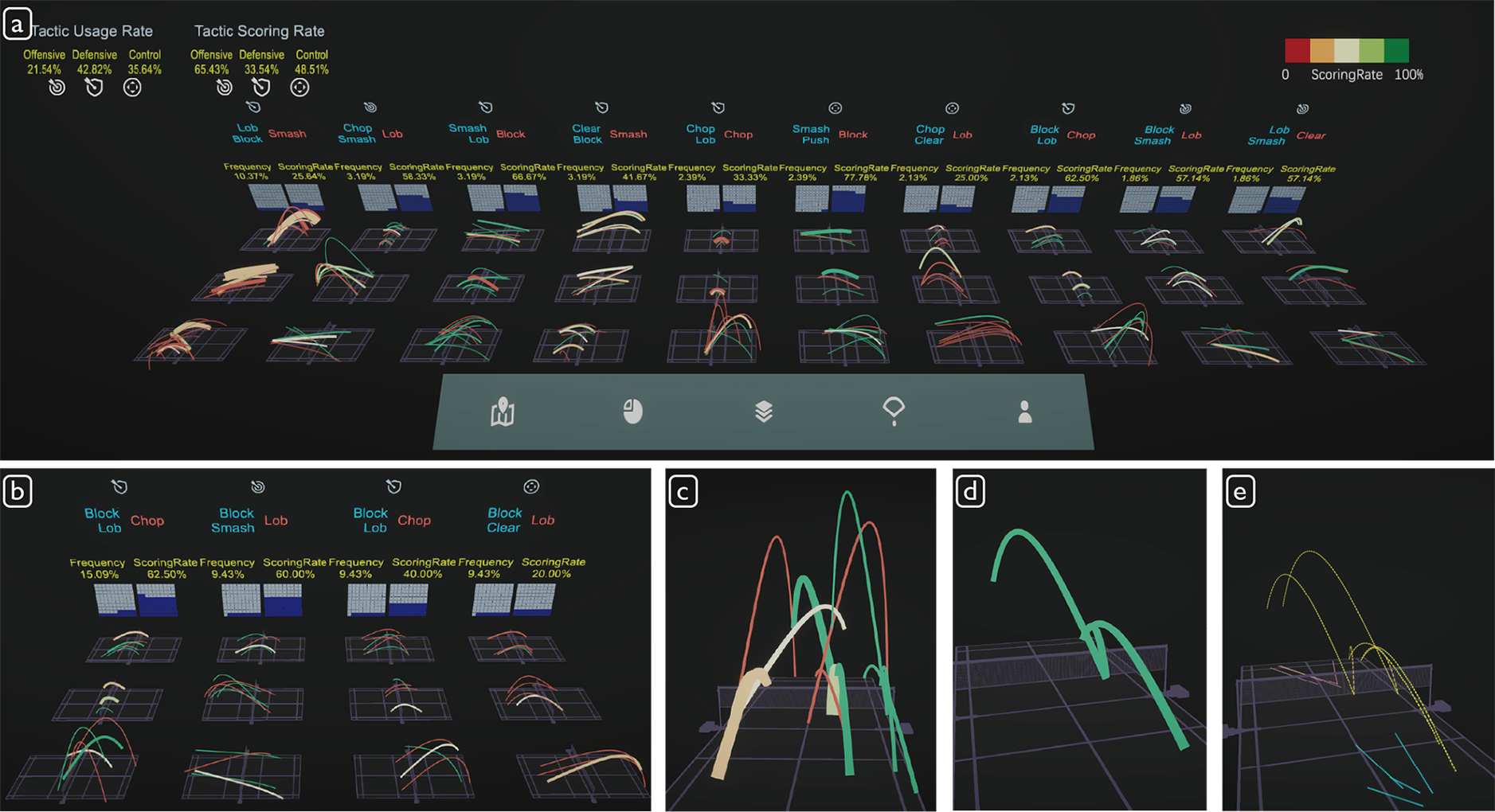TIVEE: Visual Exploration and Explanation of Badminton Tactics in Immersive Visualizations
Xiangtong Chu, Xiao Xie, Shuainan Ye, Haolin Lu, Hongguang Xiao, Zeqing Yuan, Zhutian Chen, Hui Zhang, Yingcai Wu
External link (DOI)
View presentation:2021-10-27T17:45:00ZGMT-0600Change your timezone on the schedule page
2021-10-27T17:45:00Z

Fast forward
Direct link to video on YouTube: https://youtu.be/9iJprmMHhfc
Abstract
Tactic analysis is a major issue in badminton as the effective usage of tactics is the key to win. The tactic in badminton is defined as a sequence of consecutive strokes. Most existing methods use statistical models to find sequential patterns of strokes and apply 2D visualizations such as glyphs and statistical charts to explore and analyze the discovered patterns. However, in badminton, spatial information like the shuttle trajectory, which is inherently 3D, is the core of a tactic. The lack of sufficient spatial awareness in 2D visualizations largely limited the tactic analysis of badminton. In this work, we collaborate with domain experts to study the tactic analysis of badminton in a 3D environment and propose an immersive visual analytics system, TIVEE, to assist users in exploring and explaining badminton tactics from multi-levels. Users can first explore various tactics from the third-person perspective using an unfolded visual presentation of stroke sequences. By selecting a tactic of interest, users can turn to the first-person perspective to perceive the detailed kinematic characteristics and explain its effects on the game result. The effectiveness and usefulness of TIVEE are demonstrated by case studies and an expert interview.